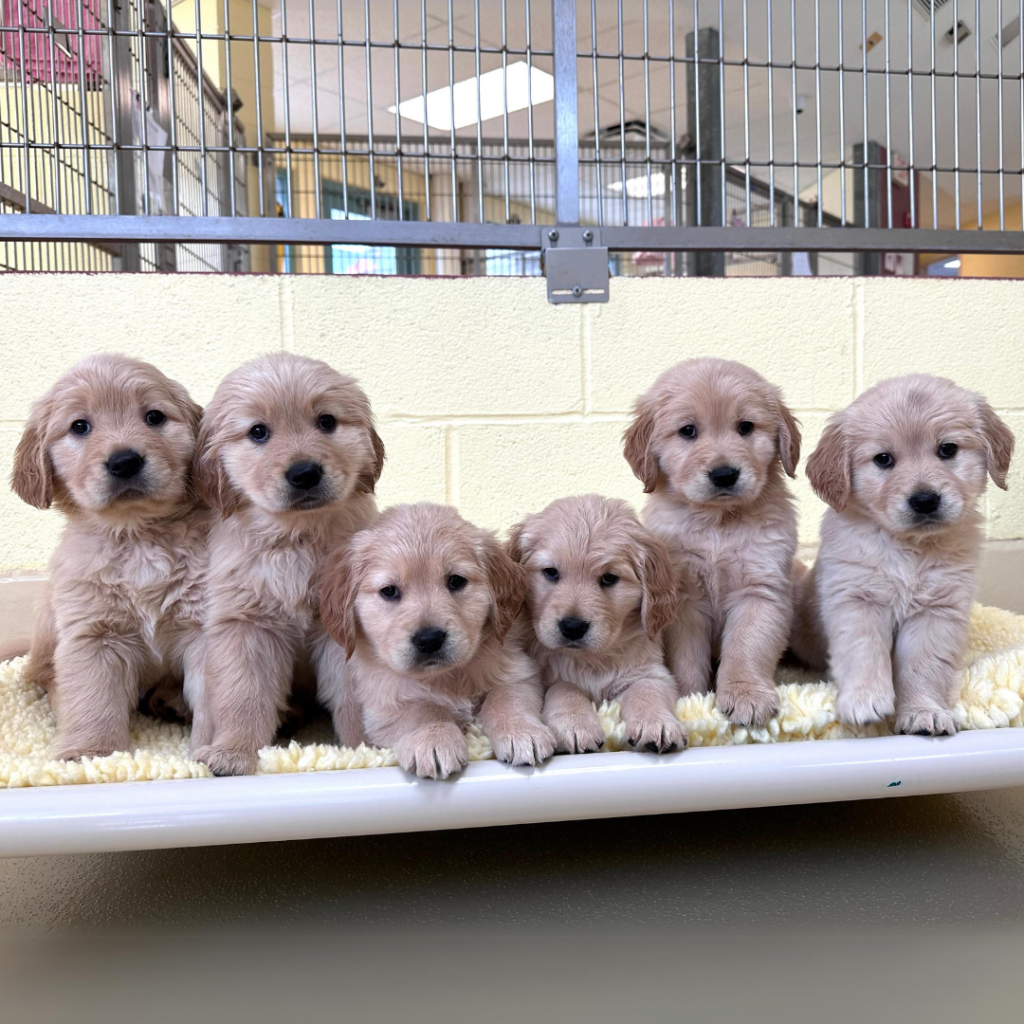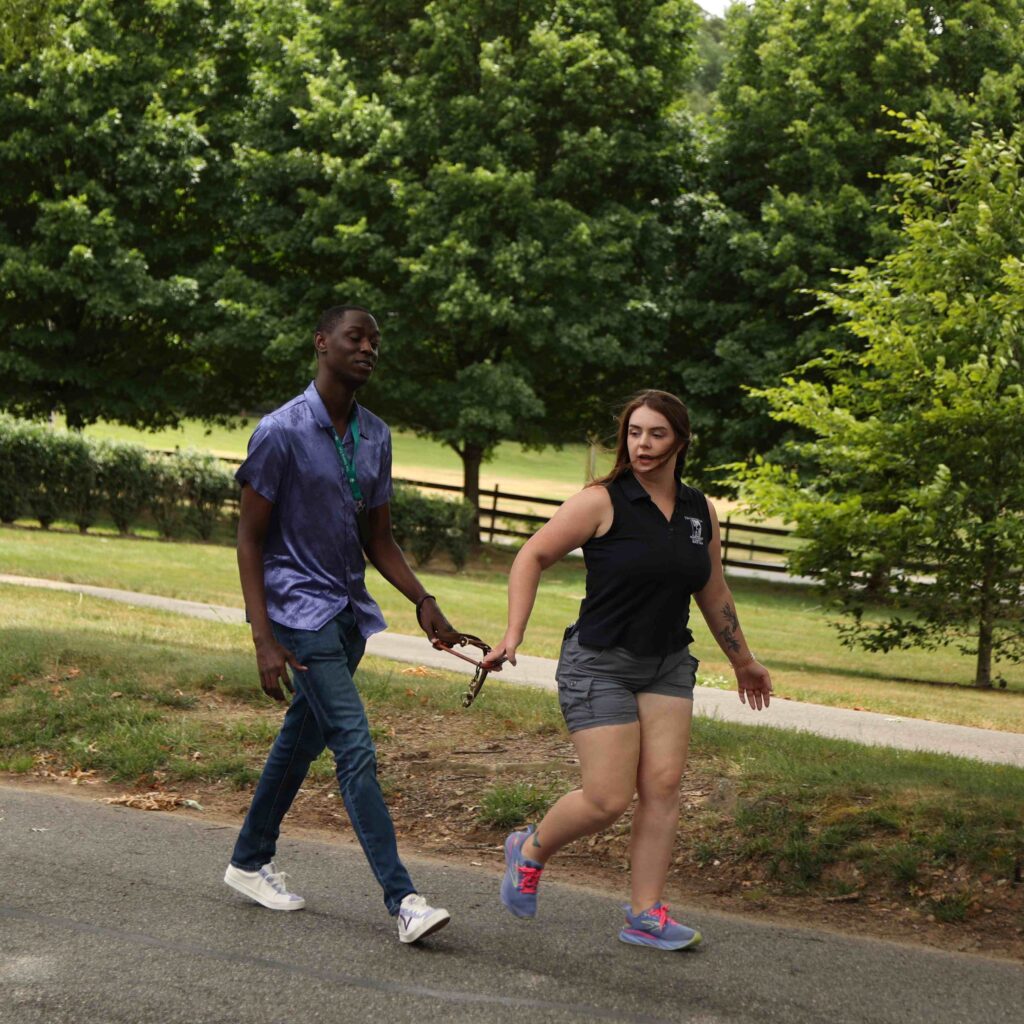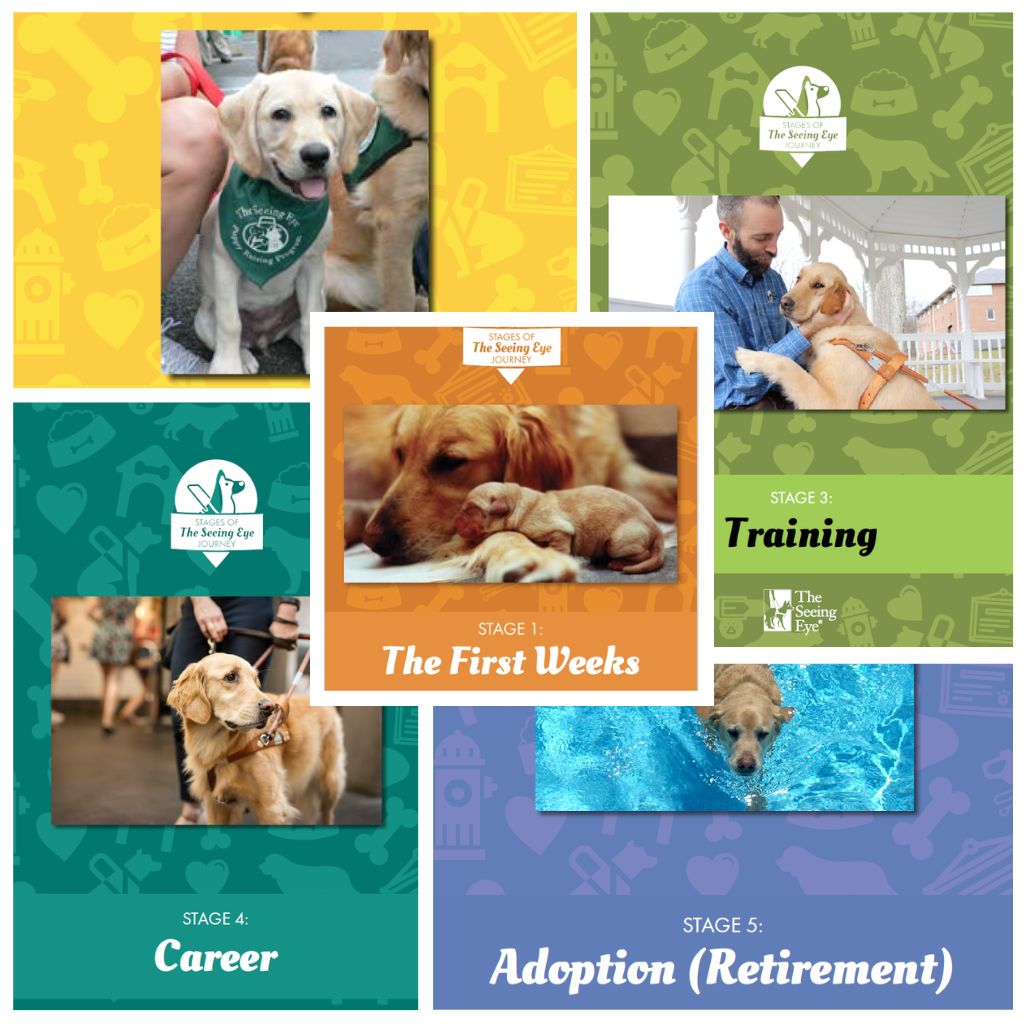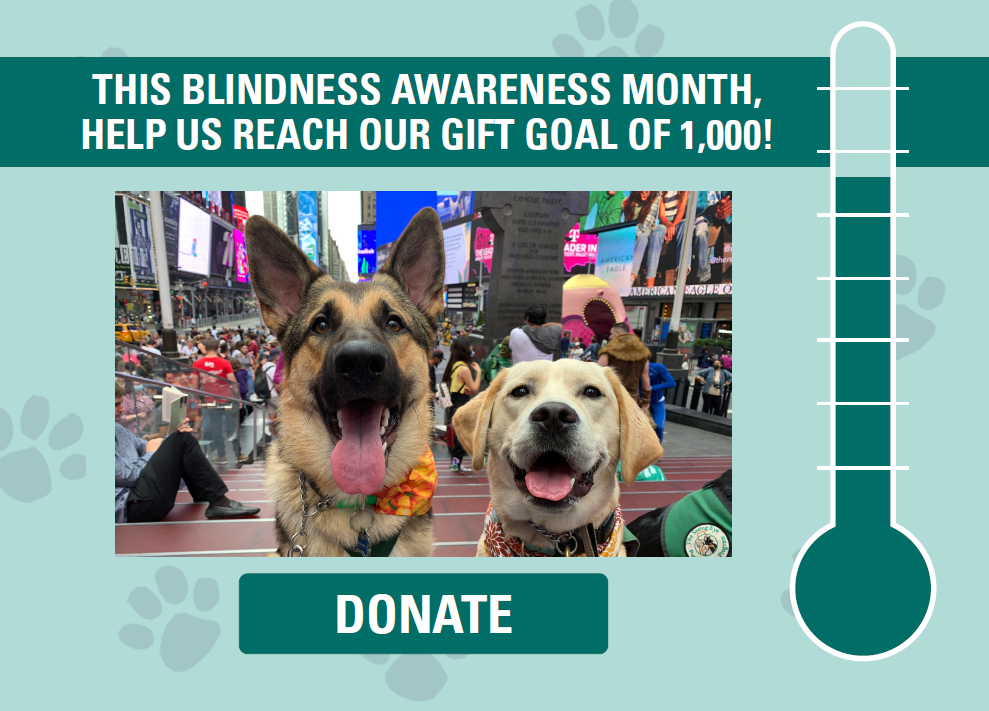Guide Dogs
Seeing Eye Dogs
Learn How The Seeing Eye Breeds, Raises, Trains and Matches Guide Dogs with People Who are Blind
The Seeing Eye, a pioneering organization in the field of guide dog training, has been transforming lives since 1929. With a focus on breeding, raising, and training exceptional guide dogs, The Seeing Eye ensures that each dog is perfectly matched with a person who is blind, enhancing their independence and mobility. Here’s an inside look at how The Seeing Eye achieves this incredible feat.
Breeding and Early Care
Seeing Eye puppies begin their journey at our state-of-the-art breeding facility in Chester, NJ. This dedicated location, separate from our main campus in Morris Township, prioritizes the health and safety of our breeding colony and puppies. Opened in 2002, the facility is designed to create a healthy, nurturing environment for puppies and maintain an active lifestyle for adult dogs. This unique setup has significantly increased the success rate of Seeing Eye puppies becoming guides.
Our breeding dogs enjoy daily walks around the scenic grounds and form close bonds with the staff. Each dog shares a spacious kennel with a roommate and participates in group play in a large yard, engaging in games like fetch, tug-of-war, and keep-away. An agility yard offers an obstacle course with jumps, tunnels, and weave poles for additional training.
Dogs are also trained in fun tricks and basic manners, skills learned from their puppy-raising families and reinforced by our staff. To keep their skills sharp, each dog and staff member aim to pass The Seeing Eye Canine Excellence Challenge, providing physical and mental challenges that keep the dogs happy and engaged, while instilling manners for their future homes when they retire from breeding.
Puppies are born at the breeding station and stay there until they are seven weeks old, when they leave for their puppy-raising homes. In their brief time at the breeding station, puppies experience more than many pet dogs do in their first year. Staff and volunteers handle, pet, and play with the puppies from their first moments, exposing them to a variety of sights, sounds, and surfaces, including vacuum cleaners, strollers, and mannequins wearing all manner of costumes.
At four weeks old, puppies start visiting a special playroom filled with fun toys, various tactile surfaces, small stairs, and more. A CD plays thunderstorms, sirens, crying babies, noisy crowds, and other sounds to familiarize the puppies with the outside world. Volunteers and staff wear funny hats, glasses, and accessories to desensitize the puppies. Puppies are also introduced to a collar and leash, so they are comfortable with these items when they meet their puppy raisers.
The Seeing Eye breeds its own dogs for the program, including German shepherds, Labrador retrievers, golden retrievers, and a Lab/golden Retriever cross. Female dogs retire at age four, and male dogs sire eight to ten litters before being adopted by loving families.
Our research in canine genetics, breeding, disease control, and behavior helps guide a Seeing Eye puppy towards its special destiny before conception. We recognize that there is no “perfect Seeing Eye dog,” and variations in temperament, size, strength, stride, and energy are crucial for successful partnerships. Our advanced computer information system calculates the suitability of each dog for breeding, and we fund innovative DNA research to build the healthiest, most productive, predictable, and reliable guide dogs possible.

Six six-week-old golden retriever siblings sit and lie together on the same raised bed covered in plush bedding in their suite in the breeding center.
Puppy Raising Program
When Seeing Eye puppies reach the age of seven or eight weeks, they are delivered to the homes of volunteer puppy raisers. Puppy raisers are foster families, from all walks of life, who nurture and care for their charges until they are about 13- to 16-months-old. They teach the puppies house manners, basic obedience, and socialize them to a variety of social situations and experiences that range from shopping and car rides, to visiting airports and boarding airplanes.
Learn more about puppy raising.

A black Lab/golden retriever cross Seeing Eye puppy rests on a train platform with an NJ Transit train on the track behind him.
Training Process
When Seeing Eye puppies are between 13 and 19 months old, they return to The Seeing Eye. Initially, they undergo health screenings, are neutered or spayed, and receive a dental cleaning.
Each dog is assigned to a Seeing Eye instructor for four months of training. Basic training begins on The Seeing Eye campus before moving to the streets of Morristown. Dogs are trained in rural, suburban, and urban environments, including the ultimate urban environment: New York City.
Seeing Eye dogs are trained to guide their handlers around obstacles, whether on the ground or overhead. They alert their handler to changes in elevation, tripping hazards and stairs. Most importantly, they learn to navigate street crossings and are taught “intelligent disobedience.” This is the principle that separates guide dog training from other types of dog training. Seeing Eye dogs are taught to ignore a command that would jeopardize the safety of the team, such as crossing against oncoming traffic or a command to step off a vacant subway platform.
The bond between Seeing Eye dogs and their instructors forms quickly and is strong. Repetition and praise are the cornerstone of our training program. Instructors evaluate the dogs’ abilities by taking blindfolded walks halfway through and at the end of the training cycle.
Instructors train approximately eight to ten dogs from start to finish. After the four-month training cycle, instructors train the dogs with their new partners for 25 days (or 18 days for returning handlers). This bonding period is crucial for the effectiveness and safety of the Seeing Eye dog and handler.

A Seeing Eye instructor works with a German shepherd who guides him through a busy street crossing.
Matching Dogs with Handlers
The matching process pairs a Seeing Eye dog with its new owner using a combination of science, art, and a bit of magic. While all Seeing Eye dogs follow the same commands, forming a new partnership involves more than just picking up the harness and saying, “Forward!”
During the four-month training process, instructors keep notes on the dogs’ work styles. When someone applies for a dog, the application includes a Juno walk, where the instructor plays the role of the Seeing Eye dog and guides the person with the harness. This helps evaluate how much pull the person needs from the dog and their preferred walking speed.
The applicant’s living and working environment is compared with the dog’s performance in similar settings during training. Personality is also considered, ensuring the dog’s energy level and character match the new owner’s needs.

A student and instructor participate in a Juno walk to evaluate the pace and pull they will need from their future Seeing Eye dog.
Conclusion
Seeing Eye dogs play a crucial role in enhancing the independence and mobility of people who are blind.
The Seeing Eye continues to innovate in training dogs for guide work and instructing individuals in their use and care. Our methods have evolved to develop the best Seeing Eye dogs, providing their owners with independence, mobility, and peace of mind.

